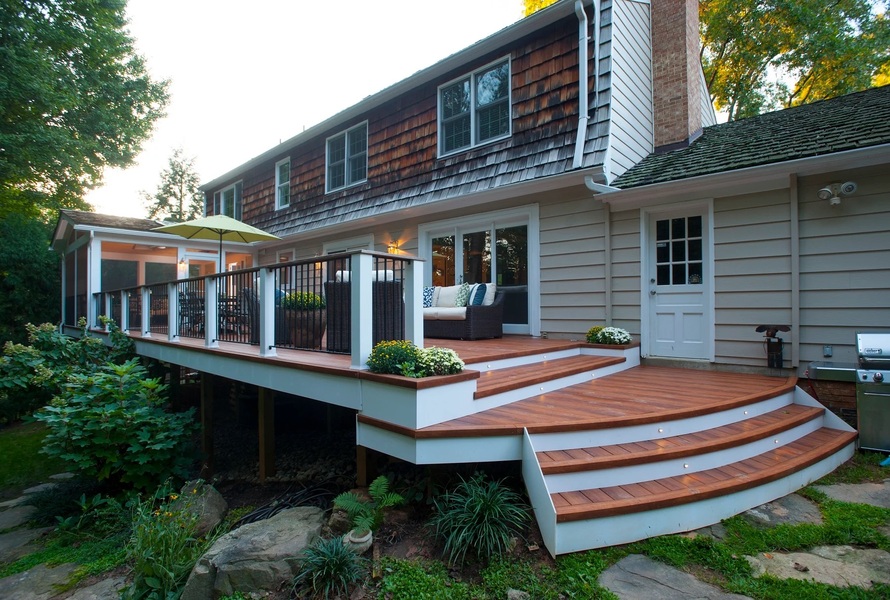What is a Detached Patio Home?
A detached patio home is the perfect blend of simplicity, privacy, and modern living. Unlike townhomes or condos, which share walls or spaces with neighbors, detached patio homes are standalone residences. However, they’re often designed with compact layouts and minimal maintenance in mind, making them ideal for individuals or families seeking a low-maintenance lifestyle without compromising privacy.
These homes are often single-story, focusing on functional spaces and open floor plans. Their hallmark feature is an outdoor patio area, which serves as an extension of the living space. This makes detached patio homes particularly appealing to those who love outdoor relaxation but don’t want the hassle of maintaining a large yard. Their thoughtful design balances personal comfort with community-oriented living, often found in gated neighborhoods or developments where shared amenities like pools and walking trails complement the private space.
Detached patio homes are especially popular among retirees, downsizers, and professionals who value streamlined living. The addition of features like elevated decks or covered outdoor spaces can elevate these homes from practical to luxurious.
2nd Level Deck Ideas: Take Outdoor Living to New Heights
A 2nd level deck doesn’t just give you outdoor space—it transforms your view and your home’s functionality. These elevated structures offer unique opportunities to make the most of vertical space, creating zones for relaxation, entertainment, and even productivity.
Design Ideas for 2nd Level Decks
- Outdoor Living Room: Outfit your deck with comfortable seating, an outdoor rug, and a weather-resistant coffee table. Add a retractable awning to create a cozy, shaded oasis that works in any weather.
- Dining with a View: Turn your deck into an alfresco dining area with a table, chairs, and mood lighting like string lights or lanterns. A built-in grill or outdoor kitchen can make hosting effortless.
- Rooftop Garden: Use planters to grow herbs, flowers, or even vegetables. Vertical garden walls and trellises can add privacy and a splash of greenery.
- Multi-Level Connections: Create a seamless flow by connecting the 2nd level deck to a lower patio or yard with wide stairs, a cascading water feature, or even a slide for kids.
- Entertainment Hub: Install a projector and screen for outdoor movie nights, complete with cozy throws and a popcorn machine.
Second-story decks are more than practical—they’re an opportunity to make a bold architectural statement. From sleek modern designs with glass railings to rustic wood finishes that blend into the landscape, these decks can be tailored to any aesthetic.
Building an Elevated Deck: Step Up Your Outdoor Game
Building an elevated deck is a rewarding project that not only expands your living space but also adds significant value to your property. Elevated decks are ideal for properties with sloped yards or scenic views, as they provide a perch to enjoy the outdoors from a new perspective.
Considerations for Building an Elevated Deck
- Structural Safety: Elevated decks require robust support systems. Materials like pressure-treated wood, steel, or composite decking are essential for durability and stability. Ensure footings are deep and strong enough to support the height and weight of the deck.
- Permits and Codes: Before building, check local zoning regulations and obtain the necessary permits. Building codes often dictate maximum height, railing requirements, and load capacities.
- Drainage and Water Management: Plan for proper drainage to prevent water from pooling on or under the deck. Sloping the deck slightly or installing drainage systems can protect its lifespan.
- Aesthetic Appeal: Choose materials and finishes that complement your home’s exterior. Composite decking offers modern looks and low maintenance, while natural wood can provide a warm, classic feel.
- Professional Help: While DIY decks are possible, elevated structures often require professional expertise to ensure safety and compliance with regulations.
The result? A stunning elevated deck that creates a functional and beautiful outdoor space, ideal for hosting gatherings or simply enjoying a quiet moment above it all.
Covered Decks Attached to House: The Best of Both Worlds
A covered deck attached to your house is a seamless way to blend indoor and outdoor living. These decks offer the practicality of a weather-protected area while still letting you enjoy the fresh air and views. Whether you’re sipping coffee during a morning drizzle or hosting a summer barbecue in the shade, covered decks provide year-round usability.
Popular Covered Deck Designs
- Gabled Roofs: Match the slope and style of your home’s roof for a cohesive, polished look.
- Pergolas with Shade Panels: Add a semi-open structure that allows sunlight while offering protection from harsh rays.
- Retractable Canopies: Enjoy the flexibility of an adjustable shade solution that lets you control light and coverage.
- Screened-In Spaces: Turn your deck into a bug-free zone with screens that don’t sacrifice the view.
- Outdoor Lounges: Add comfortable furniture, ceiling fans, and heaters for a space that’s comfortable in any season.
Covered decks attached to the house feel like a natural extension of your interior, allowing for effortless movement between indoor and outdoor spaces. Add finishing touches like hanging plants, lanterns, or weatherproof speakers to create a space that’s as stylish as it is functional.
Stand-Alone Deck: Independence and Innovation
A stand-alone deck, also known as a detached or freestanding deck, is a self-sufficient structure that doesn’t rely on your home for support. These decks are perfect for creating unique outdoor spaces in unconventional locations—by the pool, in the middle of the yard, or even nestled in a garden.
Key Features of Stand-Alone Decks
- Versatile Placement: Build your deck anywhere on your property, from a sunny spot near the garden to a shaded nook under mature trees.
- Creative Shapes: Break free from traditional square designs with curved edges, hexagonal platforms, or split-level configurations.
- Dual Purpose: Use the area underneath the deck for storage, shaded seating, or even a play area for kids.
Stand-alone decks offer ultimate creative freedom, making them a popular choice for homeowners who want to create a truly personalized outdoor space.
Detached Patio Homes vs. Traditional Homes
When comparing detached patio homes and traditional homes, it’s important to consider lifestyle, maintenance, and outdoor living options.
Privacy
- Detached patio homes offer the privacy of a standalone structure without the maintenance burden of larger properties. They’re often designed with intimate outdoor spaces like patios or small decks.
- Traditional homes provide larger lots and greater separation from neighbors, though this comes with more upkeep.
Maintenance
- Patio homes prioritize low maintenance with smaller yards and simple landscaping. This makes them ideal for those who want more leisure time and less yard work.
- Traditional homes often feature expansive lawns and gardens, which require regular care and attention.
Outdoor Living
- Detached patio homes focus on functional outdoor spaces, often incorporating patios, decks, or courtyards that maximize usability in smaller areas.
- Traditional homes have the advantage of larger lots, allowing for extensive outdoor features like sprawling decks, gardens, or pools.
Detached patio homes are ideal for those seeking a simpler, streamlined lifestyle, while traditional homes cater to those who prioritize space and customization.
FAQs
What is the meaning of patio in a house?
In a house, a patio is an outdoor area that is typically paved or decked, adjacent to the home, and designed for relaxation, dining, or socializing. It often serves as a transitional space between indoor comfort and the open outdoors.
What is another name for a patio home?
Another name for a patio home is a villa or garden home. These terms highlight the focus on outdoor spaces and low-maintenance living.
What is the patio part of the house?
The patio part of the house refers to the outdoor area connected to the main structure. It’s usually located at the rear or side of the home and is often paved, decked, or landscaped to provide a usable outdoor living space.
What is a patio in architecture?
In architectural terms, a patio is a ground-level open-air space, often enclosed by walls or fences, that serves as a private outdoor area for relaxation or gatherings. The concept originates from Spanish and Latin American architectural traditions.
What is a stand-alone deck?
A stand-alone deck is a detached, self-supported structure built independently of a home or building. These decks offer versatile placement options and can serve as outdoor living areas, dining spaces, or recreational zones.
What is a detached deck?
A detached deck, synonymous with a stand-alone deck, is a freestanding structure that isn’t connected to the home. It’s ideal for creating outdoor spaces in nontraditional locations.
How to tell if a deck is freestanding?
A freestanding deck can be identified by its support system. Unlike attached decks, which rely on the house for stability, freestanding decks are supported entirely by posts and beams, with no direct attachment to the home.
How to build an unattached deck?
To build an unattached deck:
- Choose a location and design the layout.
- Install footings and secure posts for the structure.
- Build the deck frame using durable materials like pressure-treated wood or composite.
- Add decking boards, railings, and any additional features like stairs or lighting.
Always ensure compliance with local building codes and consider hiring professionals for elevated or complex designs.

